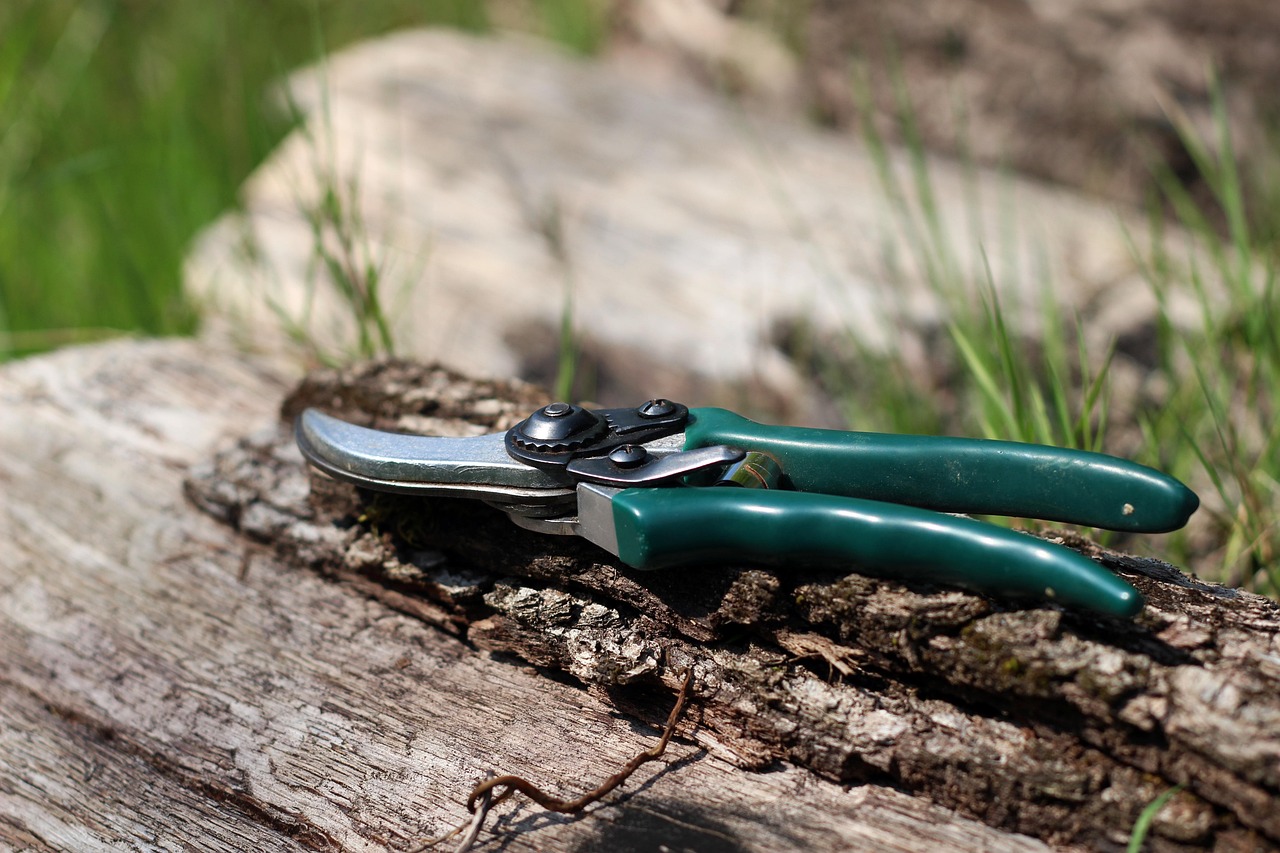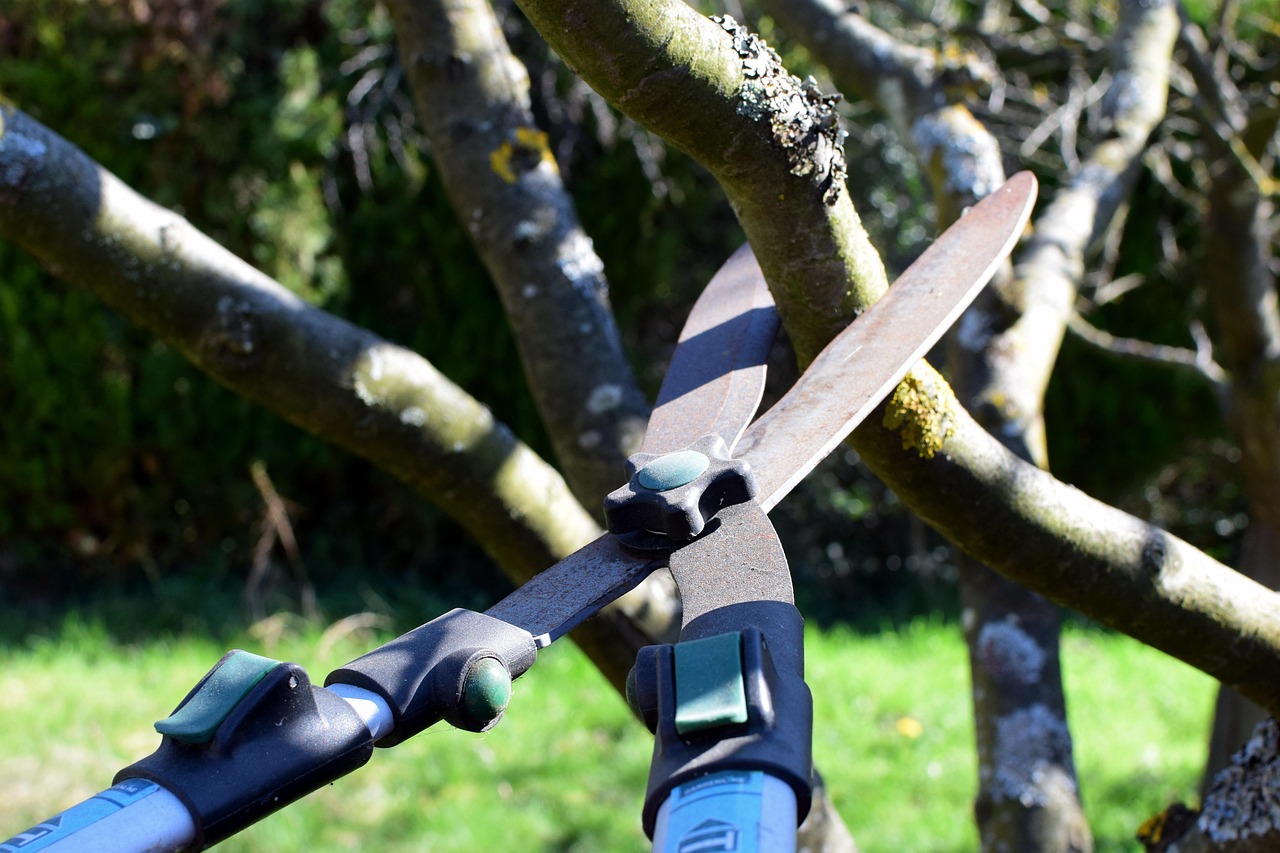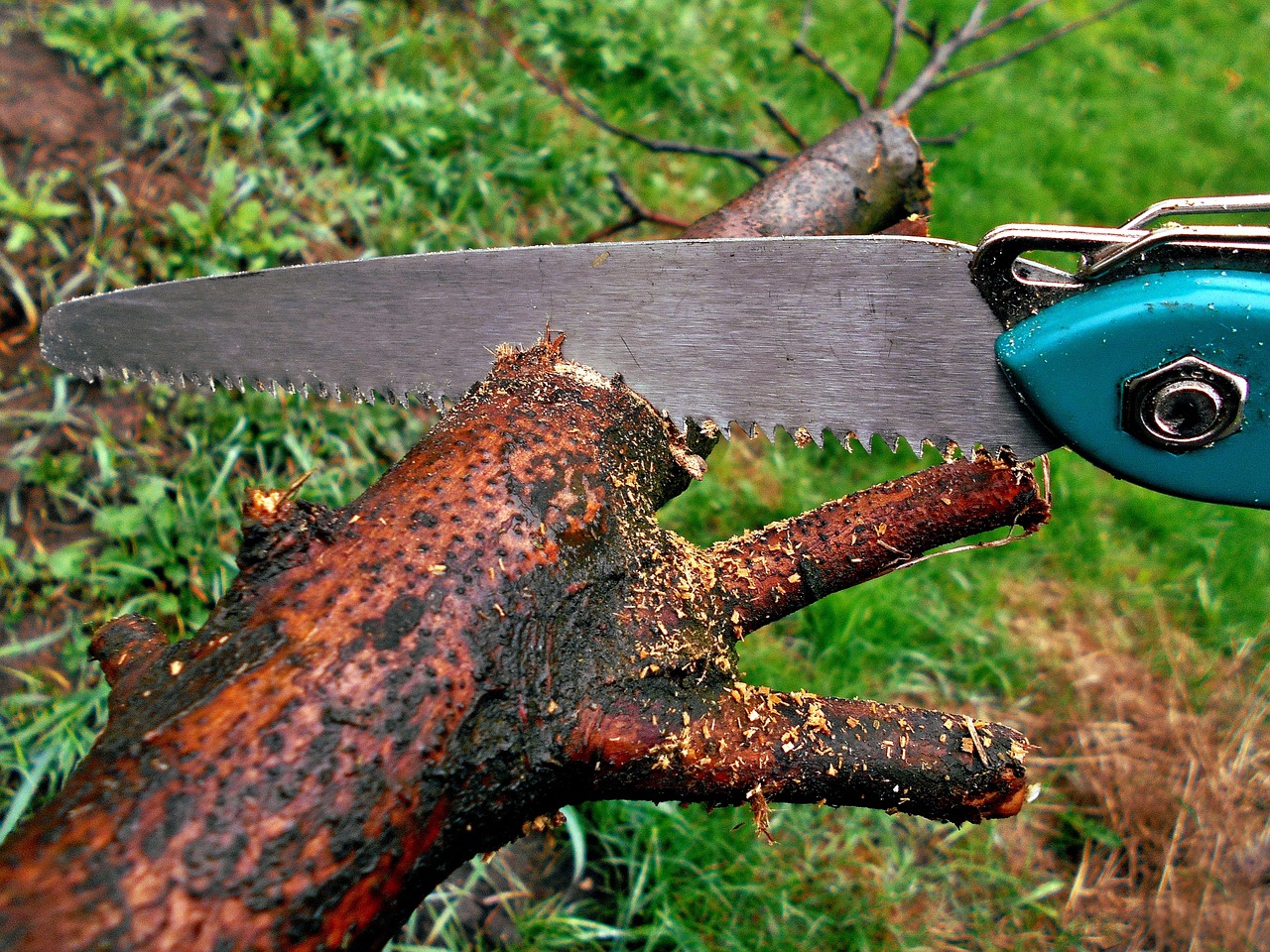Pruning in early spring offers numerous benefits, including promoting healthy growth, improving air circulation, and enhancing the overall appearance of plants. This practice helps to remove dead or diseased branches and encourages new growth, ensuring plants thrive throughout the growing season.
As the winter months fade away, many gardeners and landscapers begin to prepare their gardens for the upcoming growing season. One essential task that often comes to mind is pruning. Pruning is the selective removal of certain parts of a plant, such as branches, buds, or roots. Early spring is considered an ideal time for this activity, as it coincides with the plants’ natural growth cycles. During this time, many trees and shrubs are waking up from dormancy, and pruning can stimulate new growth and enhance their overall health.

Understanding the reasons and advantages of pruning in early spring can help both novice and experienced gardeners make informed decisions about their plants. This section will outline the primary benefits of this practice, highlighting why it is essential for maintaining a healthy garden.
Benefits of Pruning in Early Spring
There are several key advantages to pruning plants in early spring. Each of these benefits plays a crucial role in ensuring that your garden thrives throughout the growing season. Below are some of the most important reasons to consider early spring pruning:
- Encourages Healthy Growth: Pruning in early spring promotes vigorous new growth. When old or dead branches are removed, the plant can redirect its energy into producing new shoots and leaves.
- Improves Air Circulation: By removing crowded branches, pruning enhances air circulation within the plant. This reduces the risk of diseases that thrive in damp, enclosed spaces.
- Enhances Plant Aesthetics: Well-pruned plants look more attractive. Shaping them properly can improve their overall appearance and structure.
- Stimulates Flowering: For many flowering plants, pruning encourages more blooms. By removing spent flowers or buds, gardeners can promote healthier and more abundant flowering.
- Prevents Damage: Pruning weak or damaged branches helps prevent further injury during storms or high winds. This proactive step can save plants from severe damage.
In addition to these benefits, it is essential to understand which plants respond best to early spring pruning. The timing of pruning can vary based on the type of plant, as some benefit from pruning at different times of the year. The following table summarizes various types of plants and their ideal pruning times:

| Plant Type | Ideal Pruning Time | Benefits of Pruning |
|---|---|---|
| Deciduous Trees | Late winter to early spring | Encourages strong branch growth and prevents disease. |
| Flowering Shrubs (spring-blooming) | Immediately after flowering | Promotes healthy growth for next season’s blooms. |
| Fruit Trees | Late winter to early spring | Improves fruit yield by enhancing sunlight exposure. |
| Perennials | Early spring before new growth starts | Stimulates fresh growth and improves flowering. |
The benefits of pruning extend beyond aesthetics and health. It also creates a safer environment in your outdoor space. Overgrown branches may pose a hazard during storms or windy conditions. By maintaining a well-pruned garden, you reduce risks associated with falling branches or obstructed pathways.
Furthermore, early spring pruning is beneficial for managing the size and shape of your garden plants. As they grow, some plants can become unruly and take over other areas of the garden. Regular pruning helps keep them in check, ensuring that they remain manageable while still maximizing their beauty.
When approaching early spring pruning, it is essential to use proper techniques to ensure that the plants remain healthy. Using sharp tools can help make clean cuts that heal quickly. Additionally, knowing where to cut—just above a bud or branch—can significantly affect how well a plant responds to pruning.

Overall, understanding the many benefits of early spring pruning empowers gardeners to create vibrant and healthy landscapes. This practice not only ensures that plants thrive but also enhances the enjoyment one can derive from their gardens throughout the entire growing season.
Best Practices for Pruning in Early Spring
To maximize the benefits of early spring pruning, it is crucial to follow best practices. Proper techniques not only ensure that plants remain healthy but also enhance their growth and appearance. Gardeners can adopt various strategies to make their pruning efforts effective.
Choosing the Right Tools
The success of pruning largely depends on the tools used. Using the correct tools makes the process easier and more efficient. Here are some recommended tools for pruning:

- Hand Pruners: Ideal for small branches and precise cuts.
- Loppers: Suitable for thicker branches that are out of reach.
- Saws: Best for larger branches that require more power.
- Hedge Shears: Useful for shaping shrubs and hedges.
- Gloves: Protect hands from thorns and sharp edges during pruning.
It is essential to ensure that all tools are clean and sharp. Dirty or dull tools can introduce diseases to plants and create jagged cuts that may not heal properly.
Timing Your Pruning
Timing is key when it comes to pruning. Early spring is generally a safe period for most plants, but specific timing may vary based on plant species. Here are some guidelines for different types of plants:
- Trees: Most deciduous trees should be pruned before new growth begins, typically in late winter to early spring.
- Shrubs: Spring-blooming shrubs should be pruned right after flowering, while summer-blooming varieties can be pruned in early spring.
- Fruit Trees: These should be pruned while they are still dormant, promoting better fruit production as they grow.
- Perennials: Cut back dead foliage in early spring to encourage new growth.
Checking local climate and weather patterns can also help determine the best time for pruning in your area.
Pruning Techniques
Understanding various pruning techniques can enhance your gardening skills. Here are some effective methods to consider:
- Heading Back: This technique involves cutting back stems to a bud or branch. It encourages bushier growth and is ideal for many shrubs.
- Thinning: Removing entire branches at their point of origin helps improve air circulation and light penetration within the plant.
- Deadheading: This involves removing spent flowers to promote more blooms. It is especially beneficial for flowering plants.
- Crown Lifting: This technique involves removing lower branches to raise the canopy of a tree or shrub, improving visibility and access.
Utilizing these techniques appropriately can greatly enhance the health and aesthetics of your plants.
Common Mistakes to Avoid When Pruning
While pruning can be highly beneficial, several common mistakes can hinder plant growth and health. Being aware of these pitfalls can help gardeners avoid them.
- Over-Pruning: Removing too much foliage can stress a plant. Always prune judiciously and focus on the most problematic areas.
- Improper Cuts: Making cuts at the wrong angle or too close to a bud can damage the plant. Use clean, angled cuts just above a bud or branch.
- Ignoring Plant Type: Different plants have unique needs. Failing to understand these requirements can lead to unsuccessful outcomes.
- Poor Timing: Pruning at the wrong time of year can hurt a plant’s growth. Make sure to research the best timing for each species.
Signs That a Plant Needs Pruning
Gardeners should be vigilant in identifying signs that indicate a plant may need pruning. Recognizing these signs early can help maintain plant health and vigor. Some common indicators include:
- Dead or Dying Branches: These should be removed immediately to prevent disease spread.
- Crowded Growth: If branches are competing for space, thinning out some stems can improve overall health.
- Pest Infestation: Damaged or infested areas should be pruned away to protect the rest of the plant.
- Poor Flowering or Fruiting: If a plant is not producing flowers or fruit as expected, it may need pruning for rejuvenation.
By staying attentive to these signs, gardeners can take action promptly and ensure their plants remain healthy and vibrant throughout the growing season.
Caring for Plants After Pruning
Proper care after pruning is essential for helping plants recover and thrive. Here are some important steps to take following pruning activities:
- Watering: Ensure that plants receive adequate water after pruning. This helps reduce stress and encourages new growth.
- Nourishing: Applying a balanced fertilizer can provide essential nutrients that support recovery.
- Avoiding Stress: Refrain from overhandling or exposing plants to extreme conditions immediately after pruning.
- Monitoring Growth: Keep an eye on the plants for any signs of distress or disease following pruning.
Caring for your plants post-pruning will allow them to recover quickly and benefit from the changes made during the process.
The practice of early spring pruning is not just about cutting back; it involves understanding plant biology, employing proper techniques, and providing ongoing care. By mastering these elements, gardeners can significantly enhance their gardening success.
Understanding Different Plant Types and Their Pruning Needs
Different plants have unique growth habits and requirements, which significantly influence their pruning needs. Understanding these differences can help gardeners make informed decisions when it comes to early spring pruning. This section will explore various categories of plants commonly found in gardens, detailing their specific pruning requirements and techniques.
Deciduous Trees
Deciduous trees lose their leaves in the fall and enter a dormant phase during winter. Early spring is an excellent time to prune these trees before the buds begin to swell. Here are some key points regarding the pruning of deciduous trees:
- Timing: Prune while the tree is still dormant, typically late winter to early spring.
- Focus: Remove dead, damaged, or diseased branches. This promotes healthy growth and prevents potential hazards.
- Technique: Use thinning cuts to improve overall structure and allow more light into the canopy.
Examples of deciduous trees include oak, maple, and birch. Each of these trees may have specific needs, so it’s beneficial to research individual species.
Evergreen Trees and Shrubs
Evergreens retain their foliage year-round, making them a staple in many landscapes. Pruning these plants requires careful consideration to avoid removing too much green material. Here’s how to approach evergreen pruning:
- Timing: Late winter to early spring is suitable for light pruning before new growth appears.
- Focus: Remove any dead or damaged branches and thin out crowded areas to enhance air circulation.
- Technique: Avoid heavy pruning; instead, shear lightly to maintain the desired shape.
Common evergreen varieties include pine, spruce, and holly. These plants can benefit from regular maintenance to keep them healthy and visually appealing.
Flowering Shrubs
Flowering shrubs can be categorized based on their blooming season. Understanding when to prune is essential for maximizing blooms. Here are two main categories:
- Spring-Blooming Shrubs: These should be pruned immediately after flowering. Examples include lilac and azalea.
- Summer-Blooming Shrubs: These can be pruned in early spring before new growth begins. Examples include hydrangea and butterfly bush.
The timing of pruning affects future blooms, so it’s crucial to know which type of flowering shrub you are dealing with.
Fruit Trees
Fruit trees require careful attention during pruning to ensure a bountiful harvest. The best time to prune most fruit trees is in late winter or early spring before they break dormancy. Key considerations include:
- Focus: Remove any dead or crossing branches and maintain an open center for better light exposure.
- Technique: Use heading cuts to promote branching and increase fruit production.
- Nourishing: After pruning, consider applying a balanced fertilizer to support new growth.
Common fruit trees include apple, pear, and cherry. Each tree type may have its own specific pruning style, so consulting resources specific to each variety can be beneficial.
The Role of Pruning in Pest and Disease Management
Pruning plays a crucial role in managing pests and diseases within the garden. By removing affected areas of plants, gardeners can significantly reduce the spread of harmful organisms. Here’s how pruning contributes to pest and disease management:
Reducing Disease Spread
Pests and diseases often thrive in dense foliage where air circulation is poor. Pruning helps create space within the plant, allowing for better airflow. Here are some effective practices:
- Remove Infected Parts: Cut away any branches or leaves showing signs of disease.
- Cull Weakened Plants: If a plant is severely affected, consider removing it entirely to protect surrounding plants.
- Avoid Wounding Healthy Plants: Make clean cuts to prevent introducing pathogens during the pruning process.
Pest Control Strategies
Pests can be effectively managed through strategic pruning practices. Consider these methods:
- Culling Infested Areas: Remove branches that show signs of pest infestation to prevent further damage.
- Encouraging Beneficial Insects: Pruning can help create an environment that attracts beneficial insects that control pest populations.
- Monitoring Plant Health: Regularly inspect plants for signs of pests or disease to address issues early on.
The proactive approach of incorporating pruning as a pest and disease management tool can lead to healthier plants and a more productive garden overall.
The Environmental Impact of Pruning
Pruning not only benefits individual plants but also has broader environmental implications. Properly managed gardens contribute positively to local ecosystems. Here are some environmental benefits of pruning:
- Biodiversity Support: Healthy plants support diverse wildlife, including pollinators such as bees and butterflies.
- Sustainable Practices: Pruning helps maintain plant health without the need for chemical treatments, promoting organic gardening practices.
- Erosion Control: Well-pruned trees and shrubs help stabilize soil, preventing erosion and runoff during heavy rains.
Caring for your garden through responsible pruning practices contributes not just to your landscape but also supports the larger ecological balance.
By understanding the varying needs of different plant types and employing effective pruning strategies, gardeners can create thriving landscapes that benefit both their gardens and the environment as a whole.
Additional Benefits of Early Spring Pruning
In addition to the previously discussed advantages, early spring pruning provides several other benefits that contribute to the overall success of gardening endeavors. These benefits not only enhance plant health but also improve garden management and efficiency.
Enhanced Light Exposure
Pruning helps to open up the canopy of plants, allowing more sunlight to reach the interior branches and foliage. This is especially important for densely grown trees and shrubs that may block light from reaching lower leaves and branches. By improving light exposure, plants can photosynthesize more effectively, leading to healthier growth. Here are some points to consider:
- Improved Photosynthesis: Increased light helps plants produce more energy, which is essential for growth.
- Stronger Foliage: Better light conditions can lead to thicker and more robust leaves, resulting in healthier plants.
- Reduced Competition: By thinning out crowded areas, you help individual plants thrive rather than compete for limited resources.
Improved Resistance to Environmental Stress
Plants that are regularly pruned are often more resilient to environmental stresses such as drought and extreme temperatures. This resilience is due to several factors:
- Healthier Roots: Promoting new growth through pruning encourages root development, allowing plants to access water and nutrients more efficiently.
- Reduced Pest Pressure: Healthier, well-maintained plants are less vulnerable to pests and diseases, which can weaken them during stressful conditions.
- Better Adaptation: Pruned plants can adjust more readily to changes in their environment, enhancing their survival rates.
Increased Yield in Fruit Production
For fruit-bearing plants, proper pruning is crucial for maximizing yield and size of the fruit. By managing the shape and structure of these plants, gardeners facilitate better fruit production. Key benefits include:
- Optimal Sunlight Exposure: Pruning ensures that all parts of the fruit tree receive adequate sunlight, enhancing fruit quality.
- Airflow Management: Improved air circulation reduces the risk of fungal infections that can compromise fruit health.
- Encouraged Fruit Development: Strategic cuts can stimulate flowering and fruiting, leading to a more abundant harvest.
Pruning Techniques for Different Scenarios
As gardeners become more experienced with pruning, they may encounter various scenarios that require different techniques. Here are some specific situations and corresponding pruning methods:
Coping with Storm Damage
After severe weather events such as storms or high winds, plants may suffer damage. Here’s how to address storm-related issues:
- Assess Damage Quickly: Inspect your plants after a storm to identify broken or damaged branches.
- Make Clean Cuts: Remove damaged branches cleanly to prevent disease entry points.
- Support Weak Structures: For trees with split trunks or branches, consider using cables or stakes for additional support until they heal.
Encouraging Growth in Young Plants
Younger plants often require different pruning approaches than mature ones. To promote healthy growth in young plants:
- Shape Early: Focus on establishing a strong framework by selectively removing competing leaders.
- Avoid Heavy Pruning: Young plants should not be over-pruned; instead, aim for light shaping to guide growth.
- Monitor Progress: Regularly check young plants for proper structure as they grow, making adjustments as necessary.
Final Thoughts
The benefits of pruning in early spring extend far beyond mere aesthetics. Through proper pruning techniques, gardeners can enhance plant health, improve yields, and contribute positively to the environment. This practice allows for better light exposure, increased resilience against environmental stresses, and greater fruit production.
A comprehensive understanding of plant types and their specific pruning needs empowers gardeners to create thriving landscapes. The combination of effective techniques and careful management leads not only to healthier plants but also supports biodiversity within local ecosystems.
By integrating early spring pruning into your gardening routine, you can foster a vibrant garden that flourishes throughout the growing season. Whether you are managing a small home garden or a larger landscape project, the rewards of well-executed pruning will be evident in the beauty and bounty of your plants.
In summary, embracing the practice of early spring pruning is a vital step toward achieving a successful and sustainable garden. With the knowledge gained from this article, gardeners can confidently approach their pruning tasks and enjoy the many benefits that come along with them.
